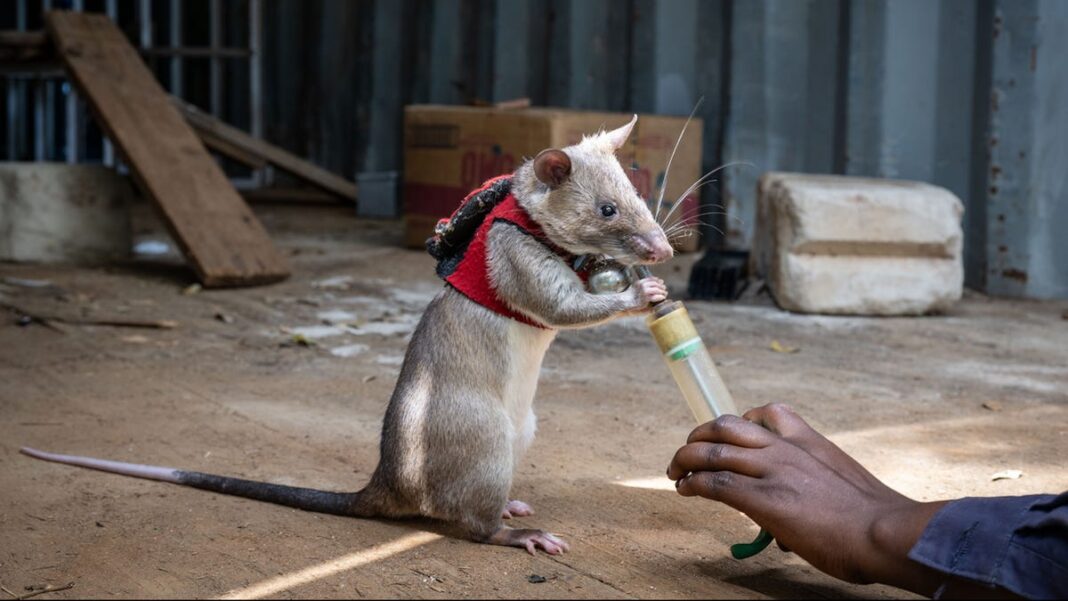Giant Rats: A New Solution for Detecting Wildlife Trafficking
Study shows that specially trained rats can successfully identify wildlife items like rhino horns among a variety of other objects, highlighting their potential in combating animal trafficking.
Giant African rats might play a vital role in stopping illegal wildlife trafficking.
According to new findings from the nonprofit APOPO, released on October 29, giant pouched rats can be trained to detect trafficked wildlife based on their sense of smell. APOPO specializes in training these rats, along with specially trained dogs.
Illegal wildlife trafficking ranks as the fourth largest illicit trade globally, trailing only drug trafficking, human trafficking, and counterfeit goods, as per U.S. Immigration and Customs Enforcement.
The research explains that current tactics for detecting illegal wildlife trade, like X-ray scans, are often costly and take a lot of time. In contrast, using scent-detecting animals offers a creative solution since they can effectively differentiate between organic materials, which may not be easily hidden from view.
Training and Testing the Rats
APOPO’s research took place from December 2017 to December 2021 at their facility in Morogoro, Tanzania. Eight rats, already accustomed to human interaction and different settings, were involved in the study.
Initially, the rats were familiarized with the scents of four wildlife items: pangolin scales, African blackwood, rhino horns, and elephant ivory. They were also introduced to various “non-target items,” such as electrical wires, synthetic wigs, new cotton socks, coffee beans, cardboard, detergent, and raw peanuts.
To recognize these scents, the rats learned to position their noses towards holes in their cages where the items were presented. Positive behaviors were rewarded with flavored treats.
The subsequent phase assessed whether the rats could successfully identify the wildlife samples mixed with the other non-target items.
Study Findings
At the conclusion of the study, all eight rats successfully distinguished the four wildlife samples from 146 non-target items.
Moreover, the rats showcased remarkable memory abilities. In one assessment, all rats correctly recognized pangolin scales, African blackwood, or rhino horns even after an eight-month break from encountering these samples.
“While we didn’t evaluate retention after 12 months, these results indicate that the cognitive retention capabilities of the rats are comparable to those of dogs,” the researchers noted.
Need for Real-World Testing
A significant limitation of the research is that all training and assessments were conducted in a controlled lab environment, which may not accurately represent the settings in which the rats would operate to detect trafficked wildlife. The researchers emphasize that additional studies are necessary to determine if giant pouched rats can maintain their success rates in real-world situations.
Next Steps
The logical progression for this research involves testing and training the rats in actual field conditions.
During these field tests, the rats will wear specially designed vests with a small, beeping ball attached to the front. This allows the rats to alert their handlers of detected targets by pulling the ball with their paws.

